#Opisthobranchia
Explore tagged Tumblr posts
Text
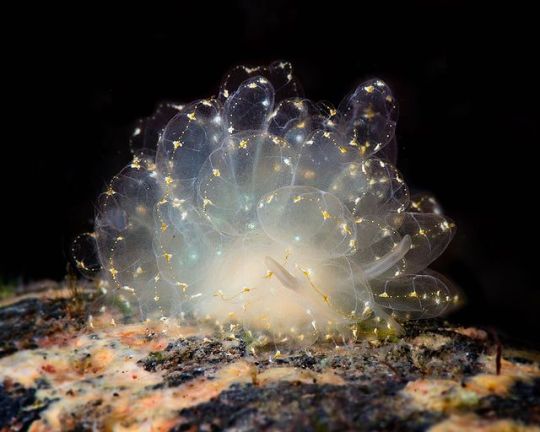
Cyerce elegans
#Cyerce elegans#sea slug#Gastropoda#Heterobranchia#Opisthobranchia#Sacoglossa#Plakobranchacea#Limapontioidea#Caliphyllidae#Cyerce#upl
25 notes
·
View notes
Text
I need to rant to someone about the taxonomy of soft-bodied marine gastropod molluscs
#NOT ALL SEA SLUGS ARE NUDIBRANCHS#and the subclass opisthobranchia is obselete since it was determined to be paraphyletic but the updated grouping euopisthobranchia doesnt#include sacoglossa or acochlidacea </3#which is booo bc elysia chlorotica are from the sacoglossa clade but are a 'sea slug' but are not nudibranches and there isnt a good term to#describe specialized complex soft-bodied marine gastropod molluscs aka sea slugs. its too broad grrr#they are all related in my heart of hearts
5 notes
·
View notes
Photo

Elysia viridis by Joao Pedro Silva https://flic.kr/p/2jGB621
0 notes
Text

Little nudibranchs 💦
#hoy he hecho estos y unos arbolillos#poquita cosa :[#drawing#personal#nudibranch#biology#opisthobranchia
0 notes
Photo


This is a sea slug (costasiella kuroshimae) that I finally finished crocheting today! It's very special and can actually photosynthesize 🍃
Ready for adoption here!
#crochet#crochetblr#crochet blog#sea slug#sea slugs#nudibranch#nudibranchs#nudibranchia#Opisthobranchia#costasiella kuroshimae#mine#marine bio#marine biology#marine life
520 notes
·
View notes
Text
Meet the…
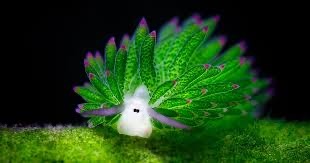
SEA SHEEP!
Costasiella kuroshimae, aka the leaf slug, sea sheep, and loads of other names, is a type of sacoglossan sea slug!
Scientific Classifications:
Kingdom: Animalia
Phylum: Mollusca
Class: Gastropoda
Clade: Heterobranchia
Informal Group: Opisthobranchia
Clade: Sacoglossa
Clade: Plakobranchacea
Superfamily: Limapontioidea
Family: Costasiellidae
Genus: Costasiella
These little cuties are around Japan, the Philippines, and Indonesia! They are capable of photosynthesis via a process called kleptoplasty, where they retain the chloroplasts from the algae they eat.
Their lifespan is between 6 months to a year. They are 5 millimeters to 1 centimeter
68 notes
·
View notes
Text
𝐒𝐞𝐚 𝐇𝐚𝐫𝐞? 𝐒𝐞𝐞 𝐇𝐞𝐫𝐞!
LET’S PLAY!
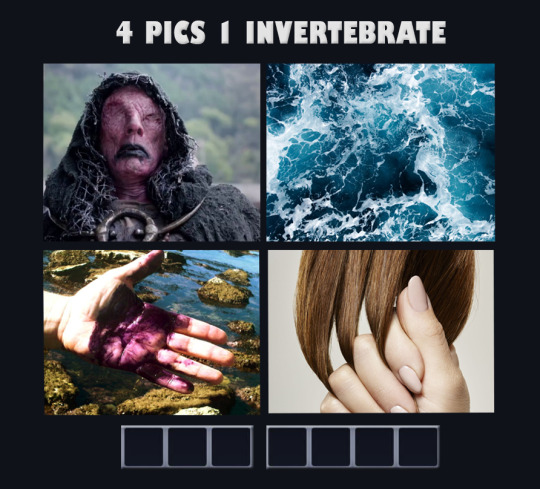
Get to know more about this invertebrate by reading this blog! It contains the classification, biology, relationship to humans, and interesting facts about this marvelous organism, specifically one of its subgroup — Aplysia.
CLASSIFICATION

Kingdom: Animalia
Subkingdom: Bilateria
Infrakingdom: Protostomia
Superphylum: Lophozoa
Phylum: Mollusca
Class: Gastropoda
Subclass: Opisthobranchia
Order: Anaspidea
Family: Aplysiidae
Genus: Aplysia
Species: Aplysia californica
(ITIS, n.d.)
Aplysia, commonly known as spotted sea hares, belongs to the group of gastropod molluscs. There are 37 known species in this genus. The word Aplysia came from the word L’Aplysia which means “that which one cannot wash”. They are one of the oldest mentioned animals from historical texts with the first authentic description provided by Pliny in his Historia Naturalis (published on 60 A.D) (Moroz, 2011) .
BIOLOGY
Ocean Globetrotters
These invertebrates are benthic dwellers that occupies the middle and lower intertidal zones, grazing on sea beds or corals. They are distributed in subtropical and tropical tide zones with one species (A. punctata) even reaching the Arctic Circle. Seven species of Aplysia can navigate long distances for example A. brasiliana which can travel up to 1 km in one swim episode (Moroz, 2011).
youtube
Spotted sea hares move in two ways, either by swimming or crawling on the sea bed. They swim by doing synchronized waves of muscular contraction pass from anterior to posterior to make a funnel that pulls in water, squeezing the anterior parts of the parapodia together forces the water out behind the creature and pushes it forward. While, they can crawl by raising the leading edge of the foot and extending it forward in an arching pattern so the rest of its body follows the arching pattern until it reaches the tail (Dice, 2014).
The Naked Alien
The body of spotted sea hares consists of a head, foot, and visceral mass. It is partially distorted, not coiled, and superficially bilaterally symmetrical (Fox, 2006).
The head has an anterior pair oral tentacles. The median union of the two tentacles forms a transverse oral veil over the mouth. A pair of rhinophores project dorsally from the surface of the neck. The oral tentacles and rhinophores serve as sensory organ. Specifically, their eyes are located at the base of each rhinophore (Fox, 2006).
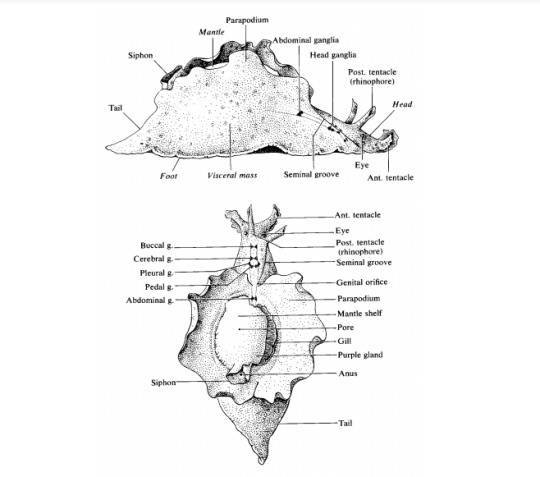
(Brooks & Hiller, 2001)
The foot lies along the midline of the ventral surface. Its posterior part serves as a sucker that is used to attach the posterior end of the animal while anterior end is elevated above the substratum. The foot extends posterior to the body as a short tail. Dorsolaterally, it is divided into two wing-like parapodia that is used for locomotion (Fox, 2006).

(Brooks & Hiller, 2001)
Their mantle and mantle cavity are found in the middle. The mantle is the dorsal body wall of the visceral mass. Inside it, the shell can be found. Below the shell is the reduced and small mantle cavity that opens broadly to the right containing the gill, anus, and gonopore. At the posterior right corner of the shell is a folded mantle resulting to a short, tubular, exhalant siphon that encloses the anus (Fox, 2006).
A Salad Lifestyle
youtube
Spotted sea hares feed on algae. A. californica (California sea hares) feeds on several kinds of red algae such as Laurencia pacifica, Plocamium pacificum and Ceramium spp. as well as sea lettuce and eelgrass. These organisms utilize their toothed radula to grasp the algae and store it briefly in the esophagus. Then, the food moves into the stomach fixed with pyramidal teeth to further crush the substances The food is blended in with different stomach-related digestive fluids to further breakdown the matter while the wastes are discharged out through the anus (Dice, 2014).
Dating on Another Level
Sea hares gather to mate. With the absence of dating apps, they find each other through tactile and chemical cues. They have photoreceptors that recognize fluctuations in the intensity of white light. Sadly, they find it hard to detect red wavelengths. To compensate, they respond more to chemical changes in seawater using the osphradium which detects dissolved chemicals in the water (Dice, 2014).
Loyalty, whomstve?
From a spiral cleavage to blastula, gastrula, trochophore and finally, the first larval stages — the development of their embryo happens inside the egg capsules. Newly hatch veligers swim upwards using their cilia and may take months drifting in the ocean while feeding on microscopic algae and bacteria until they detect cues that prompts them to settle to the alga which they will feed on. After this, they undergo rapid metamorphosis wherein they lose larval characteristics. They become juveniles that resemble miniature adults in all major features except reproductive organs (Moroz, 2011). California sea hares reach sexual maturity after about 120 days (Dice, 2014).
youtube
Sea hares are hermaphrodites, but they never self-fertilize by nature. Their copulation generally involves dozens. Every creature might be either getting or conveying sperm (or both) in respect of their present sex and position inside the chain (Dice, 2014).
Short Fruitful Years
Their life expectancy is normally short, most commonly survive for just a year. Many of them loose their life after reproduction. Amazingly, cool temperatures help delay reproduction; hence, cooler waters can fairly protract their life expectancy (Emore, 2002).
Hey, Leave Me Alone!
youtube
Distressed spotted sea hares secrete a purple ink which contains chemicals that disrupts the sensory function of opportunistic predators (Moroz, 2011). This chemical defense coupled with the distasteful algal toxins accumulated from their diet significantly creates a habitat where they can roam freely and has few natural predators (Emore, 2002).
RELATIONSHIP TO HUMANS
youtube
Sea hares are known to be highly valuable laboratory animals especially in the field of neurobiology, more specifically in studying memory and learning behaviors. The California Sea Hare (Aplysia californica) is an important neurobiological model and is used extensively in studies of behavior and psychology. They have the largest neurons in the animal kingdom making it feasible to identify the specific nerve cells responsible for certain mechanisms.
As for their ecosystem role, this herbivorous organism serves as keystone species in the intertidal ecosystem by affecting the density and abundance of its algal prey.
5 Interesting FYIs about SEA HARES
1. DUAL PURPOSE WINGS
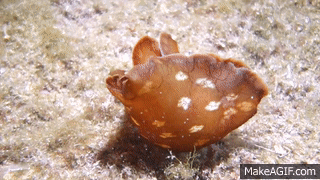
Sea hares have two large wing-like flaps that fold back on the body to protect their gills and internal shell plate. This wing-like extension is also used by some species of sea hares for short bursts of awkward swimming when threatened.
2. IT’S THE CIRCLE OF LIFE

As they say the more, the merrier. A circle of sea hares dubbed as a “Roman Circle��� is formed during mating and copulation where each animal inseminates the one in front- a group sex indeed. As hermaphroditic organisms, sea hares serve as males at their front and females at their back.
3. GO AND MULTIPLY TO THE POWER OF 10
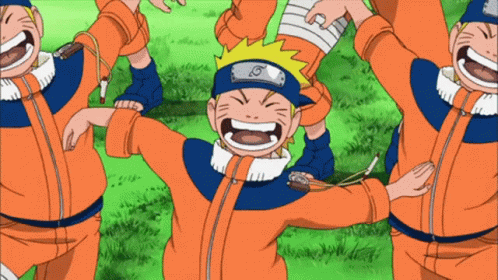
(Eleas, 2020)
Who cares about a twin, a quadruplet or a quintuplet? A single of this creature can lay up to 500 million eggs during one breeding season- that is more than a country’s population. Sea hares’ eggs are colored pink and often appear threaded.
4. WHAT YOU SEE, IS WHAT WE EAT
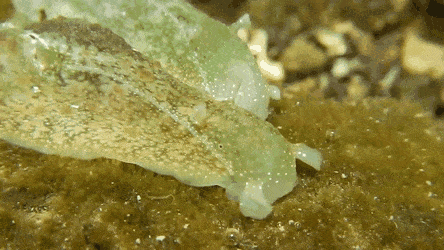
(Gfycat, 2019)
The color of sea hares are affected by the color of algae they consume. For example, young sea hares that tend to eat red algae are red in color, mature sea hares are colored green and brown because they consume algae that is also green and brown in color.
5. SEA HARES ARE CERTIFIED BTS STANS 💜 💜 💜
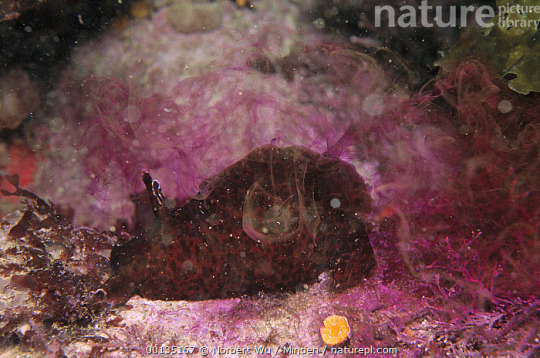
Sea hares have the right to use the infamous purple hearts on social media, and that’s a fact! This sea organism produces purple ink as a defense mechanism. Native Americans used this purple ink to dye clothing. Sea hares can also produce white or red ink depending on the color of the pigments in the seaweed they have consumed.

References
Angello, M. (n.d.). Full Frame Shot Of Sea Water [Photograph]. Getty Images. https://www.gettyimages.com/detail/photo/full-frame-shot-of-sea-water-royalty-free-image/730260985
Anonymous. (2017). Sea Hare Eggs [Photograph]. Ocean Safari Scuba. https://oceansafariscuba.com/photos/view_album/trip-11417-tidepool
Anonymous. (n.d.). Dinner Time with Sea Hares [GIF]. Gfycat. https://gfycat.com/unsteadydirectfreshwatereel-sea-hare
Brooks, R. & Hiller, J. (2001). The Role of Chemical Mechanisms in Neural Computation and Learning. [Photograph] .Research Gate. https://www.researchgate.net/publication/2524430_The_Role_of_Chemical_Mechanisms_in_Neural_Computation_and_Learning
Brown, C. (2010). Untitled [Photograph]. Flickr. https://inhabitat.com/wp-content/blogs.dir/1/files/2015/06/Sea-Hare-2-889x667.jpg
Dice, S. (2014). Aplysia californica. Animal Diversity Web. https://animaldiversity.org/accounts/Aplysia_californica/
Eleas. (2020). Naruto Clone GIF. Tenor. https://tenor.com/view/naruto-naruto-clone-funny-dancing-dance-gif-17857501
Emore, M. (2002). Aplysia dactylomela. Animal Diversity Web. https://animaldiversity.org/accounts/Aplysia_dactylomela/
Fox, R. (2006). Sea Hare. Lander University. http://lanwebs.lander.edu/faculty/rsfox/invertebrates/aplysia.html
ITIS. (n.d.). Aplysia californica J. G. Cooper, 1863. ITIS.gov. https://www.itis.gov/servlet/SingleRpt/SingleRpt?search_topic=TSN&search_value=78032#null
Moroz, L. (2011).Aplysia. NCBI. https://www.ncbi.nlm.nih.gov/pmc/articles/PMC4024469/
12 notes
·
View notes
Text
in which i lost my mind for several hours over nudibranch mouthparts

ok. so the video True Facts: Freaky Nudibranchs just casually mentions nudibranch beaks. There’s a photo in the video, credited to Dr.Jeffery Goddard:

Having done a normal amount of googling about nudibranchs, their diets and mouthparts a few months back, I was like, what the fuck??. I was previously only aware of nudibranchs having a simple mouth opening and a radula to eat with. Well, no big deal, there’s plenty of shit I don’t know a damn thing about, and we find new things every day!
So I start googling variations of “Nudibranch beak”. Of course, nothing comes up other than results talking about nudibranchs (beakless) and cephalopod or bird beaks on the same page. I try looking up Dr. Jeffrey Goddard. I don’t remember what I found initially but my friend did later bother to locate his profile on researchgate. Does a lot of nudibranch stuff
I get distracted from that for a sec and, on a whim, search “Nudibranch jaws” instead. I come across a single line on wickeddiving.com:
“For example, many dorid nudibranchs (Suborder Doridacea) have broad radulae with numerous teeth for grazing on sponges, while most aeolid nudibranchs (Suborder Aolidacea) have narrow radulae and strong jaws for feeding on hydroids and bryozoans.”
Why would you not ELABORATE on the JAWS.
Anyways I start searching “Aeolid nudibranch “jaws””. I start having slightly more luck. Actual research papers describing nudibranchs, some of which have scans or illustrations of the jaw structure, and an old website from Earlham College which has a single sentence mentioning the existence of jaws.
I found a relatively easy to tell what the fuck im looking at image within “Description of a new aeolid nudibranch (Mollusca: Opisthobranchia) belonging to the genus Phidiana” by R. C. Willan (that’s the url it says to link but if that doesn’t work then [here’s] the direct pdf link). On page 6, there’s these illustrations; we are focusing on 13, 14, and 15:

“13, entire left jaw laid fiat showing inner surface; 14, detail of jaw's hinge; 15, enlargement of border of masticatory process...“
“Jaws (Fig. 13) ovate; strongly convex on outer surface; anterior end broadly rounded; posterior end elongate. Hinge region of both jaws thickened (Fig. 14); apical thickening of jaws consisting of a short ridge aligned parallel to dorsal margin and a single, strong projection that is directed vertically downwards. Masticatory process very thin, relatively short (about one-quarter length of dorsal margin); its outer border bears a single row of 12-15, rounded, lightly cuticularised denticles that are fairly even in size (Fig. 15)“
Ok. So. Based on that and the initial photo that spurred this entire quest, I assume that these fuckers have horizontally connecting jaws? Other mentions I could find of jaws on Nudibranchs were all also papers, which I had an easier time finding by switching to searching “Phidiana jaws”. [paper 1] [paper 2] (lost the links to papers 3 and 4 but they were also describing new-at-the-time species). My second guess is that it’s only Aeolid nudibranchs that have jaws, as every nudibranch whose jaws I could find were aeolids, and the couple of dorid nudibranchs I read the original descriptions of only had their radulas included, and no mentions of a jaw. Here’s a photo of Phidiana lynceus, a slug in the same genus as the one that jaw I posted up there belongs to:

After I briefly mentioned this Quest on the blog, I was notified that many other gastropods, like land snails and freshwater snails also have similar mouthparts. This, unlike the nudibranchs, was easy to find. [A Microscopic Look at Snail Jaws] [Apple Snail Digestion]



My question, after all that, is this: Why was this information (about nudibranchs) so hard to find. You would think it wouldn’t be difficult for more sources geared towards laypeople to mention that some nudibranchs have chitinous mouthparts in addition to the radula.
It’s been 2 days and I’m still thinking about this.
#Con stop yapping#long post#nudibranchs#sea slugs#Con Loses Their Mind Over Sea Slugs: the Post#marine life#aquatic life#shoutout to my friend who helped poke around and continued to respond to my discoveries for approximately 4 hours
15 notes
·
View notes
Text

Costasiella usagi
#Costasiella usagi#sea slug#Gastropoda#Heterobranchia#Opisthobranchia#Sacoglossa#Plakobranchacea#Limapontioidea#Costasiellidae#Costasiella#upl
12 notes
·
View notes
Photo


Nudibranch: Goniobranchus splendidus
G. splendidus grows up to 4 cm and is found across the east coast of Australia. A recent study which looked at how fish recognise toxic prey found that fish predators learn to avoid the yellow rim (which is a consistent colour feature) and pay little attention to the red spots (which are variable).

Figure 1: Variations in the red spot pattern of Goniobranchus splendidus (A-D), and similar species Noumea haliclona (E) and Chromodoris hunteri (F). Figure from Rudman, 1983.
References:
Rudman, W.B., 1983. The Chromodorididae (Opisthobranchia: Mollusca) of the Indo-West Pacific: Chromodoris splendida, C. aspersa and Hypselodoris placida colour groups. Zoological Journal of the Linnean Society, 78(2), pp.105-173.
Winters, A.E., Green, N.F., Wilson, N.G., How, M.J., Garson, M.J., Marshall, N.J. and Cheney, K.L., 2017. Stabilizing selection on individual pattern elements of aposematic signals. Proc. R. Soc. B, 284(1861), p.20170926.
Photos:
1) Photo taken by Loren Mariani for the Gold Coast Sea Slug Census.
2) Photo by Anne Winters
#educational#nudibranch#marine life#marine biology#biology#marine#science#marine science#stem#Goniobranchus splendidus#toxic#toxic animal#toxic animals#underwater photography#underwater#underwater pics#wildlife photography#wildlife pics#wildlife#australia#gastropod#gastropoda#mollusc#molluscs#sea slug#sea slugs#slug#slugs
41 notes
·
View notes
Text
0 notes
Photo

Eubranchus doriae by Joao Pedro Silva http://ift.tt/2ii1Yib
0 notes
Link
Bowiebranchia on Tumblr is a collection of side by side images of Nudibranchia or other Opisthobranchia (sea slugs) compared to various David Bowie fits. Check inside the stack for this great example of "on the internet, all things exist"
0 notes
Text
Someone Spotted That David Bowie Often Looked Like A Sea Slug, Created An Entire Blog To Prove It (117 Pics)
Bowiebranchia is a tumblr that compares pictures of Nudibranchia and other Opisthobranchia to David Bowie. And I know, at first, such a blog sounds a little random. After all, what do they have in common? However, once you start actually looking at the images, the answer becomes obvious. Their appearances. At times the similarities work […]
The post Someone Spotted That David Bowie Often Looked Like A Sea Slug, Created An Entire Blog To Prove It (117 Pics) appeared first on AWorkstation.com.
source https://aworkstation.com/someone-spotted-that-david-bowie-often-looked-like-a-sea-slug-created-an-entire-blog-to-prove-it-117-pics/
0 notes
Text
Someone Spotted That David Bowie Often Looked Like A Sea Slug, Created An Entire Blog To Prove It (117 Pics)
Bowiebranchia is a tumblr that compares pictures of Nudibranchia and other Opisthobranchia to David Bowie. And I know, at first, such a blog sounds a little random. After all, what do they have in common? However, once you start actually looking at the images, the answer becomes obvious. Their appearances.
At times the similarities work to such an uncanny degree, it's hard not to imagine that Bowie was actually bitten by a radioactive sea slug and developed superhuman shapeshifting ability, allowing him to summon all of its colorful and imaginative looks. Continue scrolling and see for yourself!
#1
Image credits: bowiebranchia
#2
Image credits: bowiebranchia
#3
Image credits: bowiebranchia
#4
Image credits: bowiebranchia
#5
Image credits: bowiebranchia
#6
Image credits: bowiebranchia
#7
Image credits: bowiebranchia
#8
Image credits: bowiebranchia
#9
Image credits: bowiebranchia
#10
Image credits: bowiebranchia
#11
Image credits: bowiebranchia
#12
Image credits: bowiebranchia
#13
Image credits: bowiebranchia
#14
Image credits: bowiebranchia
#15
Image credits: bowiebranchia
#16
Image credits: bowiebranchia
#17
Image credits: bowiebranchia
#18
Image credits: bowiebranchia
#19
Image credits: bowiebranchia
#20
Image credits: bowiebranchia
#21
Image credits: bowiebranchia
#22
Image credits: bowiebranchia
#23
Image credits: bowiebranchia
#24
Image credits: bowiebranchia
#25
Image credits: bowiebranchia
#26
Image credits: bowiebranchia
#27
Image credits: bowiebranchia
#28
Image credits: bowiebranchia
#29
Image credits: bowiebranchia
#30
Image credits: bowiebranchia
#31
Image credits: bowiebranchia
#32
Image credits: bowiebranchia
#33
Image credits: bowiebranchia
#34
Image credits: bowiebranchia
#35
Image credits: bowiebranchia
#36
Image credits: bowiebranchia
#37
Image credits: bowiebranchia
#38
Image credits: bowiebranchia
#39
Image credits: bowiebranchia
#40
Image credits: bowiebranchia
#41
Image credits: bowiebranchia
#42
Image credits: bowiebranchia
#43
Image credits: bowiebranchia
#44
Image credits: bowiebranchia
#45
Image credits: bowiebranchia
#46
Image credits: bowiebranchia
#47
Image credits: bowiebranchia
#48
Image credits: bowiebranchia
#49
Image credits: bowiebranchia
#50
Image credits: bowiebranchia
#51
Image credits: bowiebranchia
#52
Image credits: bowiebranchia
#53
Image credits: bowiebranchia
#54
Image credits: bowiebranchia
#55
Image credits: bowiebranchia
#56
Image credits: bowiebranchia
#57
Image credits: bowiebranchia
#58
Image credits: bowiebranchia
#59
Image credits: bowiebranchia
#60
Image credits: bowiebranchia
#61
Image credits: bowiebranchia
#62
Image credits: bowiebranchia
#63
Image credits: bowiebranchia
#64
Image credits: bowiebranchia
#65
Image credits: bowiebranchia
#66
Image credits: bowiebranchia
#67
Image credits: bowiebranchia
#68
Image credits: bowiebranchia
#69
Image credits: bowiebranchia
#70
Image credits: bowiebranchia
#71
Image credits: bowiebranchia
#72
Image credits: bowiebranchia
#73
Image credits: bowiebranchia
#74
Image credits: bowiebranchia
#75
Image credits: bowiebranchia
#76
Image credits: bowiebranchia
#77
Image credits: bowiebranchia
#78
Image credits: bowiebranchia
#79
Image credits: bowiebranchia
#80
Image credits: bowiebranchia
#81
Image credits: bowiebranchia
#82
Image credits: bowiebranchia
#83
Image credits: bowiebranchia
#84
Image credits: bowiebranchia
#85
Image credits: bowiebranchia
#86
Image credits: bowiebranchia
#87
Image credits: bowiebranchia
#88
Image credits: bowiebranchia
#89
Image credits: bowiebranchia
#90
Image credits: bowiebranchia
#91
Image credits: bowiebranchia
#92
Image credits: bowiebranchia
#93
Image credits: bowiebranchia
#94
Image credits: bowiebranchia
#95
Image credits: bowiebranchia
#96
Image credits: bowiebranchia
#97
Image credits: bowiebranchia
#98
Image credits: bowiebranchia
#99
Image credits: bowiebranchia
#100
Image credits: bowiebranchia
#101
Image credits: bowiebranchia
#102
Image credits: bowiebranchia
#103
Image credits: bowiebranchia
#104
Image credits: bowiebranchia
#105
Image credits: bowiebranchia
#106
Image credits: bowiebranchia
#107
Image credits: bowiebranchia
#108
Image credits: bowiebranchia
#109
Image credits: bowiebranchia
#110
Image credits: bowiebranchia
#111
Image credits: bowiebranchia
#112
Image credits: bowiebranchia
#113
Image credits: bowiebranchia
#114
Image credits: bowiebranchia
#115
Image credits: bowiebranchia
#116
Image credits: bowiebranchia
#117
Image credits: bowiebranchia
from Funny – Bored Panda https://ift.tt/2Apl3rJ via IFTTT from Blogger https://ift.tt/2WsOUbg
0 notes